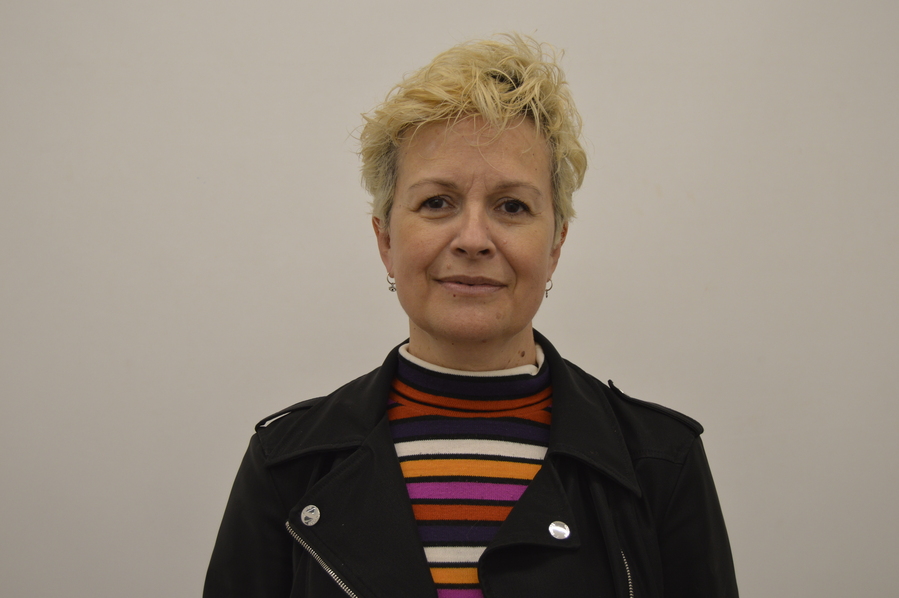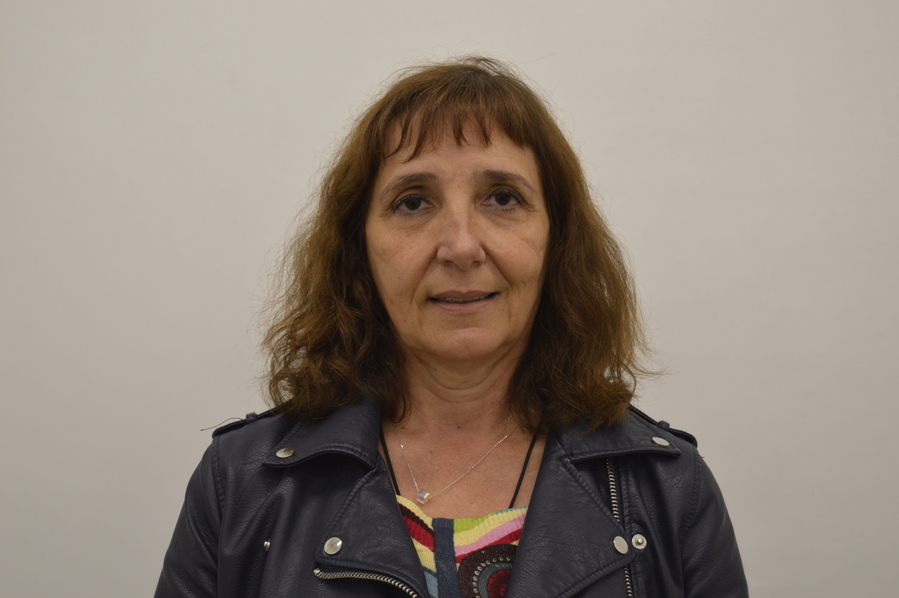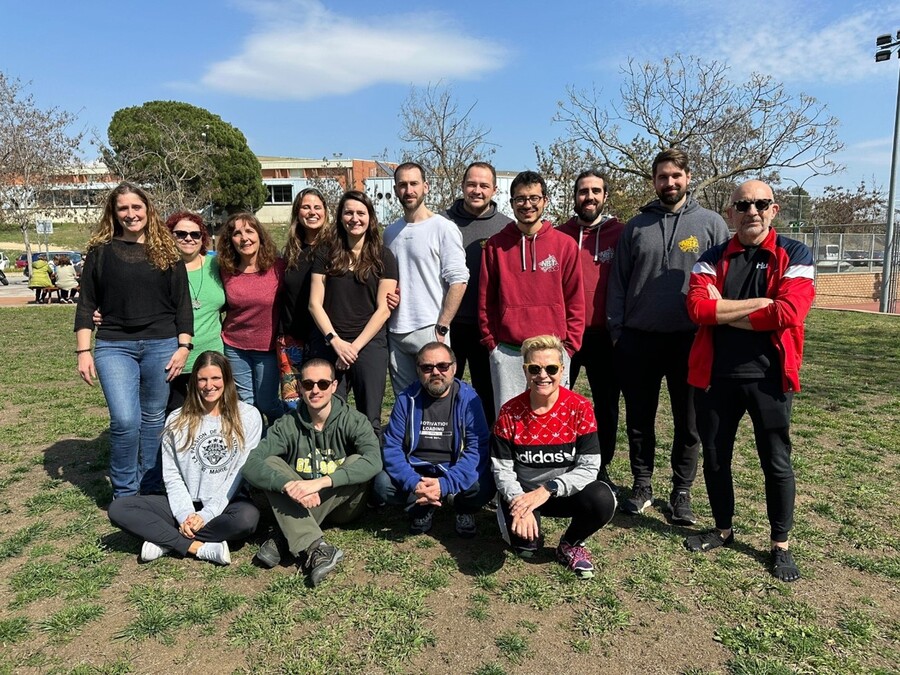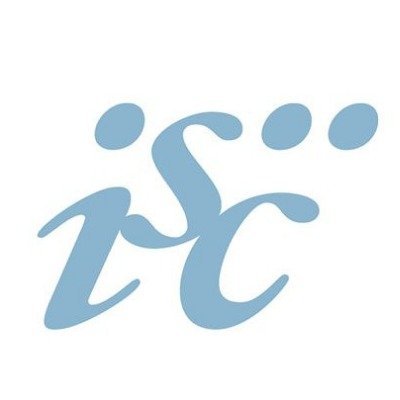Nanobiotechnology
Research Lines
The Nanobiotechnology Unit is committed to the development of biomaterials, mainly based on recombinant proteins, for their application in different therapeutic situations, either as drug carriers or as therapeutic materials themselves. The unit is a member (group CB06/01/0014) of the Centro de Investigación Biomédica en Red (CIBER-BBN) and a member of the SGR of Innovative Biopharmaceuticals (2021 SGR 00092).
The team coordinates the Protein Production Platform (PPP), that is, Unit 1 (PPP) of the Singular Scientific and Technological Infrastructure (ICTS) NANBIOSIS, which is recognized as a service provision laboratory (LPS) at the UAB.
The different current research lines of the group are:

Design of new biomaterials that function as secretion granules for the sustained release of therapeutic proteins - Dr. Antonio Villaverde
Development of micro-structured protein materials with protein secretory capacity for various biotechnological and biomedical applications, such as cancer treatment, vaccine design and tissue regeneration. In collaboration with Dr. E. Vázquez and Prof. R. Mangues, from the Hospital de Sant Pau, generates vehicle-free drugs targeting tumors with applicability in colorectal cancer and other relevant human neoplasms.

Development of protein nanoparticles for tumor treatment - Dr. Esther Vázquez
Dr. Esther Vázquez develops tumor-targeted protein nanoparticles as drug carriers and smart nanoconjugates for the treatment of different types of solid and disseminated tumors. She has also developed a new protein biomaterial formed by secretory granules that allow the slow release of protein nanoparticles after subcutaneous implantation. All these new protein-based therapeutic biomaterials are patented and transformed into clinically oriented drugs through the spin-off Nanoligent, of which she is a co-founder. These studies are carried out in collaboration with professors Rosalía Rodríguez from the UIC and Ramon Mangues, from the Hospital de Sant Pau.

Encapsulation of recombinant proteins - Dr. Neus Ferrer Miralles
Development of nanomaterials with antimicrobial activity to combat antimicrobial resistance, reduce dependence on traditional antibiotics and for the targeted delivery of therapeutic proteins.
Neus Ferrer-Miralles is also the director of the PPP Unit.

Production of recombinant human proteins for the treatment of rare diseases - Dr. Jose Luis Corchero
Dr. Corchero's current research mainly deals with the production, in mammalian cells as an expression system, of recombinant human proteins for their use as therapeutics in the treatment of rare diseases (Fabry disease and Sanfilippo syndrome). In this context, he also participates in the development of new drug delivery systems for the targeted delivery of therapeutic molecules. These nanovehicles are based on liposomal formulations or protein nanocapsules derived from eukaryotic vaults.
Information of interest
Estrategias innovadoras para terapia contra células madre tumorales: activando receptores de dopamina con nanopartículas proteicas. Instituto de Salud “Carlos III”. Ref. PI20/00770. Execution: 2021-2023
A long-lasting anti-Covid-19 subcutaneous vaccine through a novel, industrially competitive and biologically safe nanomimetic concept (INVITA). AGAUR / Generalitat de Catalunya. Ref: 2020PANDE00003. Execution: 2021-2023
Ayuda para Grupos de Investigación de Cataluña (Grup de Recerca Consolidat de Catalunya, Bio-fàrmacs innovadors). AGAUR-Generalitat de Catalunya. Ref.: 2021 SGR 00092. Execution: 01/01/2022-31/12/2024
Enzyme MutANts as tools in the quest for improved TheRapies for FAbry disease 2. Instituto de Salud Carlos III-CIBER-BBN. Ref. MANTRA 2. Execution: 2023-2024
Increase of the stability, activity and crossing of biological barriers of recombinant proteins through their vehiculization by EXtracellular vesicles and their PotentiaL biOmedical and industRial usE. Instituto de Salud Carlos III-CIBER-BBN. Ref.: EXPLORE-3; Execution: 2023-2024
Tumor extracellular vesicles as nanobeacons for personalized diagnosis of triple negative breast cancer (TNBC) patients. Instituto de Salud Carlos III-CIBER-BBN. Ref.: Nanobeacon. Execution: 2023-2024
Improved drug delivery systems for enzyme replacement therapies in Fabry disease. Effect of targeting, and protein corona in the efficacy of nanosystems. Instituto de Salud Carlos III-CIBER-BBN. Ref.: Nanobeacon. Execution: 2023-2024
Local and Systemic Enzyme Replacement Therapies for Pycnodysostosis. Instituto de Salud Carlos III-CIBER-BBN. Ref.: PYCNO-2. Execution: 2023-2024
Membrane biophysics in lysosomal storage disorders for improved therapies. Instituto de Salud Carlos III-CIBER-BBN. Ref.: MEMPHYS. Execution: 2023-2024
Microphysiological model of the blood–brain barrier (BBB)–brain parenchyma for the in vitro evaluation of permeability and efficacy of nanoformulations for brain delivery of small drugs and biomolecules. Instituto de Salud Carlos III-CIBER-BBN. Ref. DRUG2BRAIN. Execution: 2023-2024.
PROTEIN-BASED NANOPARTICLES FOR NOSE-TO-BRAIN DELIVERY TO TREAT OBESITY. AGAUR (Generalitat de Catalunya) Ref. NANOBESITY PROD 00094. Execution: 1/2/2024-31/7/2025
NEW FORMULATION OF RECOMBINANT ANTITUMOR VACCINES BASED ON SECRETORY GRANULES FOR SUSTAINED RELEASE. MINISTERIO DE CIENCIA E INNOVACIÓN. Ref. PID2022-136845OB-I00, SECRETVAC. Execution: 2023-2026
Targeted Nanoparticle Combination for the Selective Killing of Metastasis Stem Cells and Associated Fibroblasts in Colorectal Cancer. Intramural CIBER-BBN. (ISCIII). Ref. 4NANOMETS. Execution: 2023-2024.
CXCR4-targeted multivalent amanitin-nanoconjugates for precision medicines in colorectal cancer. Intramural CIBER-BBN. (ISCIII). Ref. AMATOX. Execution: 2023-2024
Impact On Colorectal Tumor Metabolism When PDGFRβ Fibroblasts Are Depleted By Targeted Nanoparticles. Intramural CIBER-BBN. (ISCIII). Ref. FIBOLISM. Execution: 2023-2024
Design of tumor-targeted nanostructured venoms for the treatment of CXCR4+ human neoplàsies. Intramural CIBER-BBN. (ISCIII). Ref. NANOVENOM. Execution: 2023-2024
MULTIFUNCTIONAL PROTEIN-ONLY NANOPARTICLES FOR NOSE-TO-BRAIN DELIVERY. Intermural CIBER . (ISCIII) Ref. NANO4BRAIN. Execution: 2023-2024
Time-sustained therapy of metastatic cancer from secretable nanoparticles. MINISTERIO DE CIENCIA E INNOVACIÓN. Ref. PDC2022-133858-I00. Execution: 2022-2024.
New protein-based nanodrugs for the development of targeted tumor-agnostic therapy. MINISTERIO DE CIENCIA E INNOVACIÓN. Ref. CPP2021-008946. Execution: 2022-2024.
In ovo vaccination of chickens against infectious bursal disease virus using ImmunoStimulatory Protein-Only Microparticles. AGAUR (PRODUCTE) Ref. 2021 PROD 00196 ISPOM. Execution: 2022-2024.
JL Corchero; M. T. P. Favaro; M Márquez-Martínez; et al. 2023. Recombinant Proteins for Assembling as Nano- and Micro-Scale Materials for Drug Delivery: A Host Comparative Overview. Pharmaceutics 15(4): 1197 (IF = 5.4 // Q1 // PHARMACOLOGY & PHARMACY)
P Español, R Rovira, P Caruana, et al. 2023. Dopamine receptors D1 and D2 show prognostic significance and potential therapeutic applications for endometrial cancer patients. Gynecologic Oncology 176: 25-35. (IF = 4.7 // Q1 // OBSTETRICS & GYNECOLOGY)
N Serna, H López-Laguna , P Aceituno, et al. 2023. Efficient delivery of antimicrobial peptides in an innovative, slow-release pharmacological formulation. Pharmaceutics 15: 2632. (IF: 5.4 // Q1 // PHARMACOLOGY & PHARMACY)
E Voltà-Durán, L Alba-Castellón, N Serna, et al. 2023. High-precision targeting and destruction of cancer-associated PDGFR-β+ stromal fibroblasts through self-assembling, protein-only nanoparticles. Acta Biomaterialia 170: 543- 555. (IF: 9.7 // Q1 // ENGINEERING, BIOMEDICAL)
A Rueda, J I. Mendoza, L Alba-Castellon, et al. Site-directed cysteine coupling of disulfide-containing non-antibody carrier proteins (THIOCAPs). 2023. SCIENCE CHINA Materials 66: 4109-4120. (IF: 8.1 // Q1 // MATERIALS SCIENCE, MULTIDISCIPLINARY)
E Parladé , J M. Sánchez, H López-Laguna, et al. Protein features instruct the secretion dynamics from metal-supported synthetic amyloids. 2023. International Journal of Biological Macromolecules 250: 126164. (IF: 8.2 // Q1, D1 // Chemistry, applied)
Alamo, P; Parladé, E; Favaro , M; et al. Probing the biosafety of implantable, self-contained artificial protein secretory granules for sustained drug release. 2023. ACS Applied Materials & Interfaces: 15: 39167-39175. (IF: 9.5 // Q1 // MATERIALS SCIENCE, MULTIDISCIPLINARY)
C Martínez-Torró, L Alba-Castellón, L M Carrasco-Díaz ,et al. Lymphocyte infiltration and antitumoral effect promoted by cytotoxic inflammatory proteins formulated as self-assembling, protein-only nanoparticles. 2023. Biomedicine & Pharmacotherapy 164: 114976 (IF: 7.5 // Q1, D1 // PHARMACOLOGY & PHARMACY)
JV Carratalá, J Atienza-Garriga, H López-Laguna, et al. Enhanced recombinant protein capture, purity and yield from crude bacterial cell extracts by N-Lauroylsarcosine-assisted affinity chromatography. 2023. Microbial Cell Factories 22: 81 (IF: 6.4 // Q1 // BIOTECHNOLOGY & APPLIED MICROBIOLOGY)
Y Núñez, A Garcia-León, A Falgàs, et al. T22-PE24-H6 nanotoxin selectively kills CXCR4-high expressing AML patient cells in vitro and potently blocks dissemination in vivo. 2023. Pharmaceutics 15: 727 (IF: 5.4 // Q1 // PHARMACOLOGY & PHARMACY)
E Voltà-Durán, E Parladé, N Serna, et al. Endosomal escape for cell-targeted proteins. Going out after going in. 2023. Biotechnology Advances 63:108103 (IF: 16 // Q1, D1 // BIOTECHNOLOGY & APPLIED MICROBIOLOGY)
López-Laguna, H; Rueda, A; Martínez-Torró, C; et al. Biofabrication of Self-Assembling Covalent Protein Nanoparticles through Histidine-Templated Cysteine Coupling. 2023. ACS Sustainable Chemistry & Engineering 1: 4133-4144 (IF: 8.4 // Q1, D1 // ENGINEERING, CHEMICAL)
Funding
Additional information







